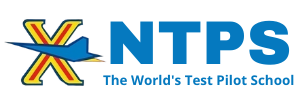T&E 4008 Introduction to Systems Testing
Course Description
This two-week course is offered on-campus twice a year and is designed to provide an overview of Systems testing and is ideally suited to newcomers entering the field, experienced personnel who are returning to the field or need refresher training, and flight test managers or support personnel newly assigned to a systems flight test program. In addition to systems theory and operating practice, the principles and techniques of avionics flight testing are emphasized to provide students with a firm understanding and background necessary to participate immediately in any flight test program upon return to their respective organizations. Practical flight exercises are structured to build on material covered in the classroom lectures and to reinforce the students’ knowledge through practical application of theory. Students will conduct a final project and present their findings and recommendations on mission suitability and specification compliance in an oral briefing
Anticipated Student Academic Outcomes
Upon successful completion of this course, the student will:
Be Familiar With
1. Avionics flight test process, specifications and regulations.
2. Areas to be considered in planning a mission and how to write test cards.
3. The format and content of technical reports, both written and oral.
4. Risk management and safety considerations while planning and conducting a flight test program.
5. Human factors and workload evaluation.
6. Communications and navigation systems testing.
7. Data bus structure and TSPI.
8. Airborne radar testing.
9. Electro-optical and infrared systems testing.
10. Software development testing.
11. Electromagnetic compatibility and interference
Understand
1. The approach to safely and effectively execute ground and flight test of avionic systems.
2. The techniques used to conduct a cockpit evaluation.
3. The techniques for evaluating GNSS.
4. The techniques for evaluating systems for Required Navigation Performance (RNP) operations.
5. The techniques for evaluating workload.
6. The techniques for evaluating ground based NavAids.
